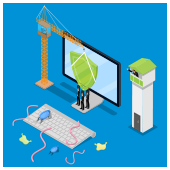 Without technology, businesses cannot compete and succeed. But with the advancement in technology comes the ever-constant threat of hackers and cybercriminals. That’s why small- and mid-sized businesses (SMBs) need to protect themselves with robust cybersecurity solutions managed by reputable managed IT services providers (MSPs).
Without technology, businesses cannot compete and succeed. But with the advancement in technology comes the ever-constant threat of hackers and cybercriminals. That’s why small- and mid-sized businesses (SMBs) need to protect themselves with robust cybersecurity solutions managed by reputable managed IT services providers (MSPs).
The numbers
Through the years, the number of SMBs falling victim to cyberattacks has drastically increased. Ransomware attacks, misconfigured systems, credential stuffing, and social engineering are among the many cyberthreats that SMBs face. Also, according to Verizon’s 2021 Data Breach Investigations Report, one in every five data breach victims was an SMB. What’s more, only 47% of SMBs are able to detect breaches within days.
The financial consequences have also considerably increased. IBM’s Cost of a Data Breach Report 2021 shows that “data breach costs rose from USD 3.86 million to USD 4.24 million.”
The numbers don’t lie, so it’s only about time SMBs take cybersecurity seriously. You can safeguard your business from cyberattacks and provide a more secure customer experience by working with a trusted MSP.
Why managed services?
Partnering with MSPs is the most effective way to prevent attacks and defend against malicious threats. MSPs offer a full range of proactive IT support that focuses on advanced security, such as around-the-clock monitoring, data encryption and backup, real-time threat prevention and elimination, network and firewall protection, security awareness training, and more. Here are some of the services an MSP can offer:
-
- Around-the-clock monitoring – A cyberattack can happen at any moment. By having someone watching your networks and systems 24/7, MSPs ensure that any potential threats are identified and dealt with quickly.
- Data encryption and backup – Data encryption transforms readable data into an unreadable format. This can be done through the use of a key, which is only accessible to authorized users. This way, even if the data is compromised, it can’t be read without the key. Meanwhile, data backup is the process of creating and preserving copies of data so that it can be restored in the event of data loss.
- Real-time threat prevention and elimination – By using technology that can detect and stop threats as they happen, this security solution can minimize the impact of an attack and keep your business data safe.
- Network and firewall protection – Networks and firewalls create a barrier between the business network and the internet, securing confidential data, such as customer information, employee records, and trade secrets. Networks can be configured to allow certain types of traffic through while blocking others, so that only authorized users can access specific resources.
- Security awareness training – Now, more than ever, SMBs need to be aware of cybersecurity threats and how to protect themselves. MSPs can facilitate security awareness training that can help employees spot red flags and know what to do (and not do) to keep company data safe.
Managed IT services are designed to identify and fix weak spots in your IT infrastructure, enabling you to optimize the digital backbone of your business processes. With managed IT, you’ll also have faster network performance, a solid business continuity and disaster recovery strategy, and minimal downtime. You’ll also get a dedicated team of IT professionals ready to assist you with any technology-related problems. This is much more effective and budget-friendly than having in-house personnel juggling all of your business IT needs.
Being proactive when it comes to cybersecurity is the only way to protect what you’ve worked hard to build. If you’d like to know more about how managed services can benefit your business, just give us a call — we’re sure to help.

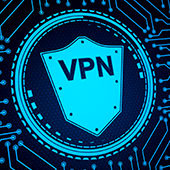 Today, just installing anti-malware software and a firewall on your computer isn’t enough to keep you safe as you use the internet. Nowadays, a hacker can intercept messages sent to and from your computer and steal the data they contain. This is why you need a virtual private network (VPN).
Today, just installing anti-malware software and a firewall on your computer isn’t enough to keep you safe as you use the internet. Nowadays, a hacker can intercept messages sent to and from your computer and steal the data they contain. This is why you need a virtual private network (VPN).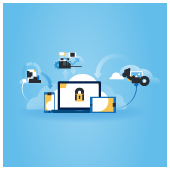 Despite the large number of cybersecurity incidents being reported every day, many businesses still fail to put adequate cybersecurity measures in place to keep their data and operations secure. If you’re looking to beef up your company’s cyber defenses, consider a proactive cybersecurity strategy. Learn what proactive cybersecurity is and how it can help protect your organization.
Despite the large number of cybersecurity incidents being reported every day, many businesses still fail to put adequate cybersecurity measures in place to keep their data and operations secure. If you’re looking to beef up your company’s cyber defenses, consider a proactive cybersecurity strategy. Learn what proactive cybersecurity is and how it can help protect your organization.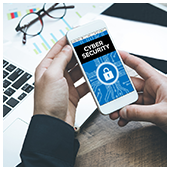 Cybersecurity has long been paramount for businesses that utilize digital solutions, but it’s even more essential for today’s distributed workforces. As cloud and mobile technologies continue to prove their value, it’s important that you take proactive steps to manage and protect company mobile devices. Here’s what you should do.
Cybersecurity has long been paramount for businesses that utilize digital solutions, but it’s even more essential for today’s distributed workforces. As cloud and mobile technologies continue to prove their value, it’s important that you take proactive steps to manage and protect company mobile devices. Here’s what you should do. These days, cyberattacks are inevitable for any and all businesses, regardless of size or sector. Businesses that use computers with outdated firmware are particularly vulnerable to an attack and all the security risks associated with it.
These days, cyberattacks are inevitable for any and all businesses, regardless of size or sector. Businesses that use computers with outdated firmware are particularly vulnerable to an attack and all the security risks associated with it.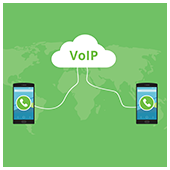 Hackers launch denial-of-service (DoS) attacks to render IT systems and networks inaccessible to intended users. Large corporations’ web servers used to be frequent targets, but nowadays, every business can become a victim. Hackers have also started launching attacks on Voice over Internet Protocol (VoIP) systems. This brief guide on telephony DoS attacks can help you become better prepared.
Hackers launch denial-of-service (DoS) attacks to render IT systems and networks inaccessible to intended users. Large corporations’ web servers used to be frequent targets, but nowadays, every business can become a victim. Hackers have also started launching attacks on Voice over Internet Protocol (VoIP) systems. This brief guide on telephony DoS attacks can help you become better prepared.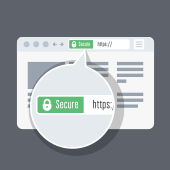 When you visit a website, do you see a padlock icon on the browser’s address bar? That’s one of the first signs that a website is safe to visit. That padlock is a security feature that authenticates websites and ensures that the data that users submit to that site is protected. Another sign that a site is secure is if its URL has an “S” after the “HTTP” prefix. Here’s what you need to know about that “S.”
When you visit a website, do you see a padlock icon on the browser’s address bar? That’s one of the first signs that a website is safe to visit. That padlock is a security feature that authenticates websites and ensures that the data that users submit to that site is protected. Another sign that a site is secure is if its URL has an “S” after the “HTTP” prefix. Here’s what you need to know about that “S.” At a time when cyberattacks are more sophisticated than ever, data security and privacy should be every small-business owner’s top priority. The good news is you don’t have to be a tech wizard to make it happen. Here are some practical ways to shield your company from hackers.
At a time when cyberattacks are more sophisticated than ever, data security and privacy should be every small-business owner’s top priority. The good news is you don’t have to be a tech wizard to make it happen. Here are some practical ways to shield your company from hackers. Do IT security terms like “phishing” and “intrusion protection” sound extremely foreign to you? If so, it’s time you familiarize yourself with these and other common cybersecurity terms. By learning these basic concepts, you’ll be more aware of the depth and scope of online dangers and, hopefully, be better prepared to deal with them.
Do IT security terms like “phishing” and “intrusion protection” sound extremely foreign to you? If so, it’s time you familiarize yourself with these and other common cybersecurity terms. By learning these basic concepts, you’ll be more aware of the depth and scope of online dangers and, hopefully, be better prepared to deal with them.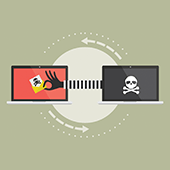 Microsoft 365 is one of the most widely used business productivity suites today. From email and collaboration to cloud storage and enterprise content management, the robust features of its cloud-based tools and servers are nothing short of useful. Still, Microsoft 365 presents certain security challenges that businesses must address.
Microsoft 365 is one of the most widely used business productivity suites today. From email and collaboration to cloud storage and enterprise content management, the robust features of its cloud-based tools and servers are nothing short of useful. Still, Microsoft 365 presents certain security challenges that businesses must address.